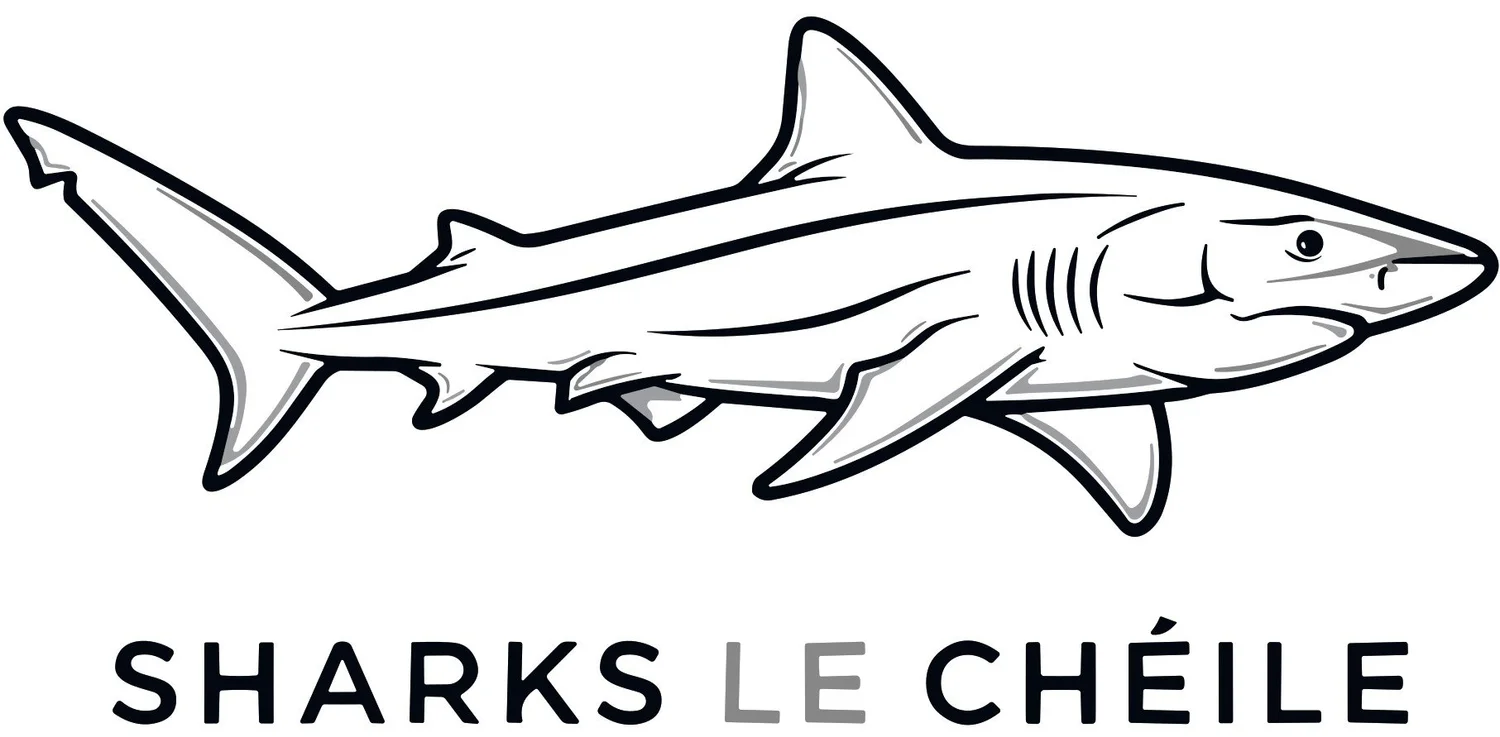Irish Elasmobranch Research Projects
Shark Island
Trinity College Dublin, 2022 - 2026
Shark Island is a multidisciplinary project linking biologists, policy makers and the general public to enhance sustainable public interaction with Ireland’s shark and ray species, while simultaneously improving conservation outcomes for these animals in Ireland’s waters. Headed by Dr Nick Payne and Dr Luke Cameron (pictured left) at Trinity College Dublin, Shark Island combines research on the physiology, welfare and ecology of sharks and rays in Irish waters with creating new formal partnerships between scientists and anglers, and evaluating the potential for new shark and ray ecotourism ventures in Ireland.
One of Shark Island’s main objectives is to deliver a user-friendly platform and resources aimed at informing stakeholders (that’s anglers, divers, and members of the public), managers and policy makers with high quality accessible outputs to support best conservation practices for sustainable interaction with Irish sharks, skates and rays. If any of this sounds familiar to you it’s because this is also the mission brief for Sharks le Chéile, which was initially set up as part of the wider Shark Island project.
This project has investigated the animal welfare impacts of catch and release angling for sharks and rays, generated new insights about shark movements and distributions from Inland Fisheries Ireland’s tagging database, and is currently in the process of tracking the movements of tope caught in Irish waters using satellite tags (pictured left), among other research projects.
As well as being a research programme, Shark Island is intended to be a partnership and networking platform with a dual focus of (1) encouraging broader participation in sustainable shark and ray ecotourism and angling in Ireland and (2) conservation of the unique elasmobranch populations in a region that is increasingly recognised as a global ‘hotspot’ for these animals. The project will lay the foundations for future marine ecotourism, and conservation of sharks and rays around the Irish coast.
MOSAIC
The Multi-disciplinary Ocean Sensing for Adaptive International Conservation Project
2026 -
Led by Loughs Agency, and with partner organisations throughout the Republic of Ireland, Northern Ireland and Scotland, MOSAIC (The Multi-disciplinary Ocean Sensing for Adaptive International Conservation Project) will create a cross-border, interregional, multi-sensor marine biological observation system that gathers data on important yet endangered and declining species, including elasmobranchs, along with their ecological environments. The aim is to generate data-driven action plans and decision-making tools to bolster ongoing monitoring activities in an ever-changing ocean.
The MOSAIC project aims to integrate data on oceanography and biodiversity to create management plans for various mobile marine species. The project builds on the achievements of previous initiatives like SeaMonitor, COMPASS and STRAITS.
CETUS
Cetacean, Elasmobranch, Turtle, and Seabird distribution modelling platform supporting the sustainable development of offshore renewable energy
University College Cork, 2022 - 2026
Irish maritime waters are home to a rich diversity of megafauna (e.g., cetaceans, seabirds, and elasmobranchs) and will by the year 2030 also contain 5 Gigawatts of Offshore Renewable Energy (ORE) devices. To understand the potential for interactions between these megafauna and ORE devices, CETUS aims to find and compile all available datasets on sensitive megafauna species (cetaceans, elasmobranchs, turtles, and seabirds) and build a national standardised database which can support visualization and mapping of species distributions. Data pertaining to megafauna and the wider foodweb will be sourced from national institutes and agencies (e.g., Marine Institute, INFOMAR, ICES, OSPAR, Inland Fisheries Ireland), from previous projects and surveys (SCANS, OBSERVE, KOSMOS, ESAS, Irish Sea Turtle Project) and previous tracking studies. The database will be connected to high performance cloud computing platform (Blue Cloud) which will support visualisation and analysis of species distributions, behaviours, and movement patterns. The platform is also connected to existing EU data infrastructures (e.g., Copernicus) and will support a comprehensive multi-species modelling approach to determine the environmental drivers of distributions, behaviours, and movement patterns (e.g., foraging hotspots, common migration patterns). CETUS aims to close identified knowledge gaps on selected at risk species with targeted biotelemetry studies using satellite tagging equipment (elasmobranchs and seabirds), acoustic tagging equipment (elasmobranchs) and bioacoustics recorders (cetaceans). Lastly, CETUS will carry out a synthesis of all data to determine spatial and temporal overlap with existing and planned ORE installations.
The primary objective of CETUS is to use existing national datasets with biotelemetry and bioacoustic studies to gather novel data on the movements, behaviours, and habitat preferences of sensitive and non-commercial species. A key objective of CETUS is to close knowledge gaps on selected at risk species with targeted biotelemetry studies using satellite tagging equipment (elasmobranchs and seabirds), acoustic tagging equipment (elasmobranchs) and bioacoustics recorders (cetaceans).




